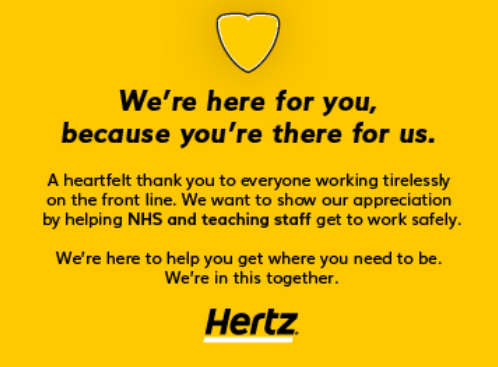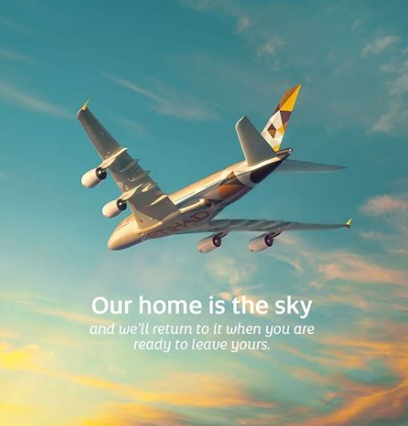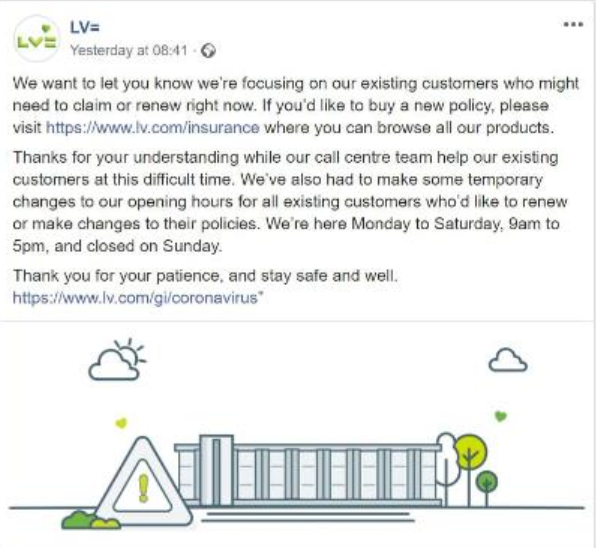As content-creators, we find ourselves in a very different sort of crisis as a result of the coronavirus pandemic which is gripping the world.
Unprecedented is the word that everyone’s using, but it’s not just that that’s floored us. Unexpected, inexplicable and downright dumbfounding are a few more adjectives that spring to mind.
People are so used to being told that everything is going to be alright, that it becomes more important than ever for brands and businesses to hone their messaging to match the mood of the time.
And consumers’ inboxes have been bombarded with messages from every company to whom we have ever given our details, telling us what measures they are taking to get through this time of crisis.
Are you washing your hands?
If you haven’t already told your customers you’re sanitising, handling carefully, postponing or triple deep-cleaning, don’t rush to publish. Everyone else has already, and that’s now become the new normal. I’m not going to own up to how many mailing lists I’ve unsubscribed from as a result of these well-intended emails, which surely isn’t great for long-term business.
So why do these seemingly reassuring messages not make us feel – really and truly feel – better?
It’s because they’re functional and corporate. They’re sanitised (but not in a good, ‘clean your hands and sing happy birthday twice’ kind of way), and feel like they’ve been issued because someone upstairs felt like they should be and because everyone else is doing it.
Taken together, they have the opposite of a reassuring effect – rather, they can reinforce the sense of differentness, unease and even downright panic for many consumers.
The messages that truly cut through in moments such as this have a much more empathetic tone. They are emotional, warm and understanding; they express solidarity. They serve to empathise the point that, today, it’s even more important than ever to hit the right note, both for the micro-moments of the discovery mindset when people are searching for information, and also when people are in more of a passive frame of mind and open to content being distributed to them.
And they demonstrate – show, not tell – what brands are doing to help in these understandably worrying times.
That’s what we call Complete Content
Right now we’re seeing a surge in content consumption as anxious consumers turn to the internet for answers and updates. A whopping 47% of millennials are reading more online news, and 37% are using social media more often. (Source: GWI 13th – 16th March 2020). There have also been big increases in search volumes across the globe, as consumers actively seek out the information they need. Both content distribution and content discovery are critical right now.
Your digital content presents an opportunity to be agile, as people will be actively searching for news that specifically affects them – whether that’s travel-related or for academic resources, or even fitness content.
And we’re all reading our email and scrolling through our phones – so distribution of the right messages and content is critical.
So, who’s getting it right?
So many brands have shown heart and empathy in recent times, but it’s the ones who are really giving back who stand out.
Hertz have literally gone the extra mile with free car hire for health workers in New York City, and opened up their fleet for the NHS, education and public safety professional in the UK to rent a car for £1 per day.

Etihad Airways have had to reduce their flights, however they responded quickly with an online content hub, and helpful hero banners on their home page. Their tone of voice has been supportive and reassuring, and they’ve built on this with some powerful human-focused messaging on their social channels. Behind the scenes, they also carried out a humanitarian mission to bring people home to the UAE from Wuhan.

And little gestures have gone a long way:

To resonate in this moment, saying something isn’t good enough – brands need to show they’re doing something to make a difference.
It’s also heart-warming to see brands prioritise their existing customers, ahead of trying to win new business. LV= have set the bar high, with dedicated support for anybody who may need to change their plans:

Here are our tips for keeping your content flowing in a crisis:
- Keep communicating – let people know you’re there in the moments that matter.
- Watch your step - think carefully about the most relevant active discovery moments and passive distribution moments where you can add the most value.
- Review your content plan – be hypersensitive to the global situation and pull anything that’s irrelevant or inappropriate. This is a great way to flex your digital reach and maximise the creative agility that traditional media is slower to offer.
- Be generous – what can you offer of value? We’re seeing so much free content right now – from audiobooks to workouts, as well as paywalls coming down. This is a great opportunity to give what you can to people, while also enabling you to build your database and track consumer behaviour, to help you understand and serve people better in the future.
Still stuck for ideas?
Tune in to what other industries are doing and take inspiration.
Make sure your own website and channel messaging is not only clear, but empathetic and human.
And above all, keep communicating – because now is when people are really listening.



